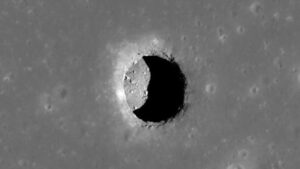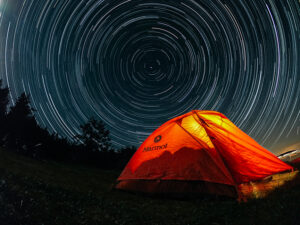A passion for the natural world drives many of our adventures. And when we’re not outside, we love delving into the discoveries about the places we live and travel. Here are some of the best natural history links we’ve found this week.
Nessie, is that you?
New evidence for the Loch Ness Monster?: Millions of years ago, plesiosaurs swam in the sea surrounding the UK. The reptiles, known for their long neck, could grow up to 13m long. Newly discovered fossils suggest that they also lived in freshwater environments such as lochs.
Though others have found plesiosaur fossils in lakes and fresh water, this study found the fossils of an astonishing 12 plesiosaurs. Nick Longrich, who led the study, believes that this is proof that they lived in these environments.
Nessie believers point to this as evidence that the Loch Ness Monster is more than a myth. The long neck of the plesiosaurus resembles that of the monster, and these fossils prove that such animals could have survived in an environment such as Loch Ness. But there is one slight issue: Plesiosaurs died out 66 million years ago, and Loch Ness formed only 10 million years ago.
Record coral cover on Great Barrier Reef: The northern and central regions of the Great Barrier Reef have the highest amount of coral cover in 36 years.
The Great Barrier Reef has faced several storms and bleaching events in recent years, which greatly depleted the living coral. Though coral cover in the south is still decreasing, this is a glimmer of hope that the reefs are starting to recover. The mass bleaching event this year was the fourth in six years, and the first during a La Niña.
Scientists are worried that if this trend continues the new reefs will not survive because new corals are very vulnerable to stress. “Future disturbance can reverse the observed recovery in a short time,” marine scientist Mike Emslie explained.

A sea turtle hatchling pushes itself out onto the sand. Photo: Shutterstock
Male turtles needed
Female sea turtles in Florida: The temperature of the sand determines whether a sea turtle egg becomes male or female. As global temperatures rise, so does the percentage of female turtles hatched.
Florida is a well-known nesting site for turtles. In the last four years, no male hatchlings have been found. At other sites, on the cooler beaches around the Great Barrier Reef, 65% of hatchlings are female. On the warmer beaches in the area, this rises to 90%.
The “feminization” of sea turtle populations is happening worldwide and is now posing a threat to turtle populations. Scientists fear that other reptiles, such as alligators, will face the same problem.
Giant Pandas in Europe six million years ago: Researchers have analyzed two fossilized teeth from the Bulgarian Museum of Natural History. They belong to a giant panda species that lived six million years ago in Europe.
It is not the first time scientists have found giant panda fossils in Europe, but these are the youngest examples. Scientists think it might have been the last panda species found on the continent.
The pandas may have lived in swampy forests, many of which turned into coal fields. Modern giant pandas eat bamboo but these ancient teeth would not have been strong enough for this. At the end of the Miocene period, warning temperatures would have dried out the swamp-like habitat, making it impossible for the black-and-white bears to survive.
South Korea to probe the moon
South Korea launches lunar orbiter: South Korea’s space program is making progress. On August 5, they launched their first lunar orbiter.
The Korea Pathfinder Lunar Orbiter was launched in SpaceX’s Falcon 9 rocket from the U.S. Space Force Station in Florida. The orbiter weighs 678kg and separated from the rocket after 40 minutes. The South Korean space team has confirmed that it is functioning properly and is on course to enter the moon’s orbit in December.
Once there, it will complete a year-long observation. Among other tasks, it will search for a landing site. South Korea is aiming to send a probe to the moon by 2030.

Aerial image of the sinkhole outside the town of Tierra Amarilla, Chile. Photo: Sernageomin
Massive sinkhole opens in Chile: A giant sinkhole has opened in Chile. It is 32m wide and sits near Tierra Amarilla, a town north of Santiago.
The hole opened on July 30 at the Alcaparrose copper mine. Geologists think that the hole is about 200m deep and has a reservoir of water running through it. They have put a 100m security perimeter around the site and are investigating what happened.
Sinkholes form where water pools underground with no drainage. The water erodes the rock, forming caverns. The surface rock then falls in because of a lack of support. Sinkholes take years to form but can open very suddenly. Luckily, this formed in an uninhabited area.






